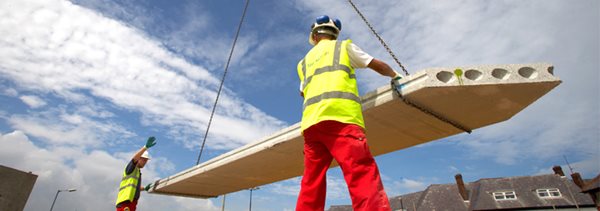Precast
Precast concrete refers to any concrete products formed in factory conditions and then provided to site. This includes concrete blocks, precast concrete elements for buildings and infrastructure, as well as whole building systems.
Precast products can de divided into 10 main types:
- Architectural cladding
- Cast stone and other decorative items
- Drainage - including pipes, culverts and manholes
- Flooring - including beam and block and hollowcore
- Masonry - including blocks and walling
- Paving, landscaping and street furniture
- Piles and foundations
- Railway-specific products
- Roof tiles
- Structural - including beams, columns and panels.
Sustainability credentials
| Recycling |
Recycling systems capture virtually all process water, slurry, aggregates or cement and these are re-used in the production process. 85% of the water produced by the precast sector is recycled or re-used. |
| Resource Depletion |
25% of aggregates used in the precast sector are recycled or from secondary sources. The sector has set a target to increased the use of additional cementitious materials to 25% Precast products can often be re-used in thier entirety. |
| Waste |
The precast concrete sector uses more water than it produces. A tonne of precast product uses 218 kilogrammes of secondary materials and by-products and produces only 6 kilogrammes of waste that goes to landfill. Concrete buildings can be designed with less finishes, reducing the associated material waste. |
| Water |
Dependency on mains water supplies is being drastically reduced across the industry as companies adopt recycling systems and alternative water sources, such as rainwater harvesting. 180 litres of water are used per tonne of precast concrete product, 36% of which is from licensed non-mains sources. Water-reducing admixtures also minimise water use. |
| Biodiverity |
Companies with factories in more rurual areas are increasingly committed to protecting and enhancing the natural environment. A site in Yorkshire was the first manufacturing site to attain The Wildlife Trust's 'Biodiversity Benchmark'. |
| Health and Safety |
The comprehensive MPA Precast health and safety scheme (CT2010) has helped members reduce their overall incidence rates by two thirds, compared to 2000. Admixtures are used to produce self-compacting concrete which does not require vibration, leading to quieter working environments. |
Source: Concrete Credentials: Sustainability, MPA - The Concrete Centre, 2010
